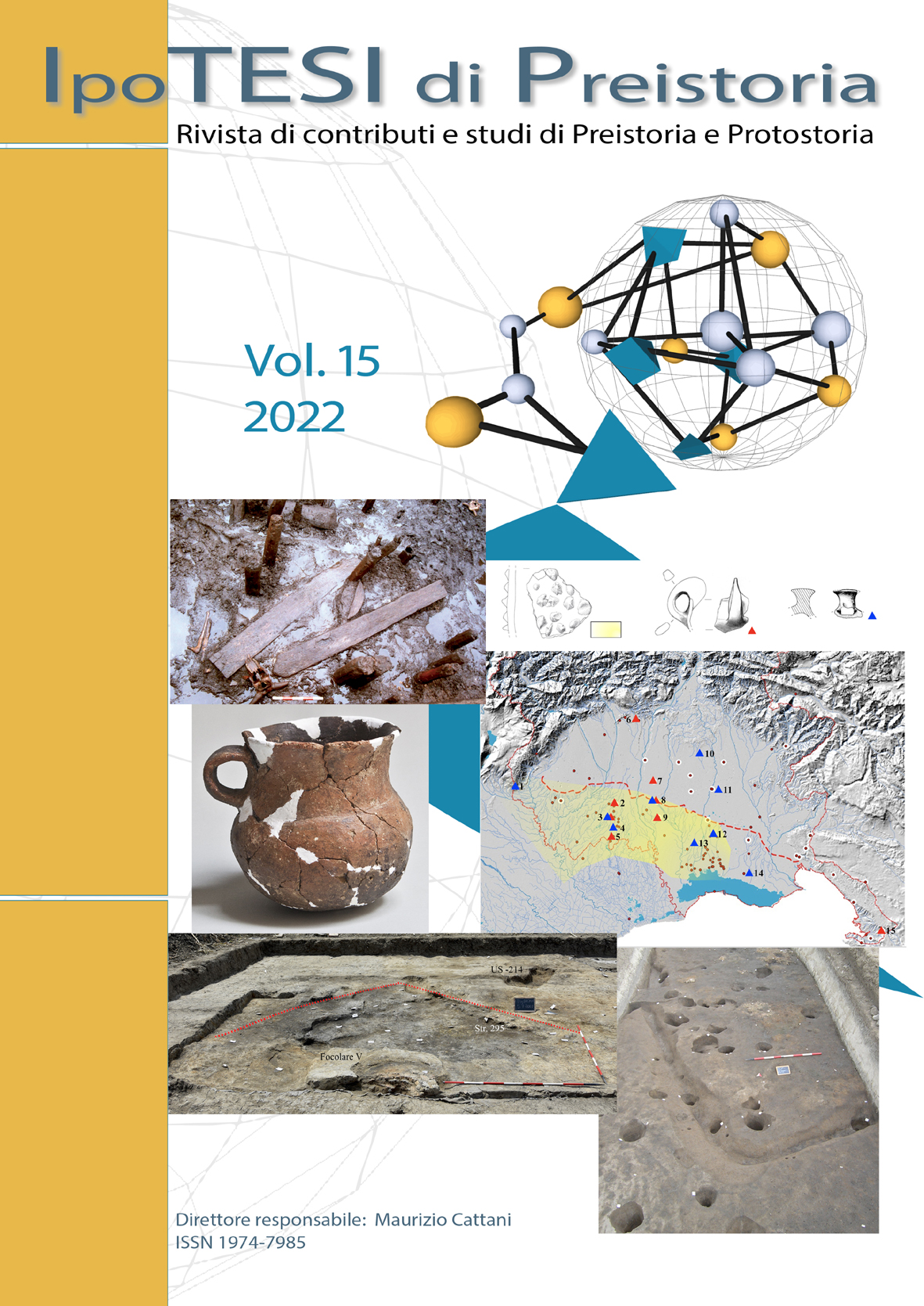The pile dwelling settlement of Dossetto di Nogara (Verona). Excavation season 1999
DOI:
https://doi.org/10.6092/issn.1974-7985/16053Keywords:
cultura di Polada, bioarcheologia, resti cranici, archeotanatologia, dendrocronologia, palafitta fluviale, antica età del BronzoAbstract
The pile dwelling, which has been only limitedly excavated in 1999, is located along the old watercourse of the river Tartaro in the Verona plain. The dwelling can be dated to the Early Bronze Age and the materials belong to the Polada culture with affinities with the middle Danubian culture of Wieselburg-Gàta. The excavations brought to light a complete neurocranium and fragmentary remains of the skeletal face of a child about 6 years old immediately above at inhabited levels. From these, 10 bone fragments of cranial vault probably belonging to an adult and child were found. Dendrochronological investigation allowed the absolute dating of the wooden structures in the archeological area, thanks to the cross-dating against the oak chronology GARDA 1. Felling dates goes from 1963-1943 to 1933-1915 BC. The analysis of the faunal remains, the carpological remains and some wooden artifacts completes the cognitive framework on the economy and the exploitation of wood in the phases of life of the settlement.
Downloads
Published
How to Cite
Issue
Section
License
Copyright (c) 2022 Luciano Salzani, Alfonsina Amato, Alessandro Canci, Silvia D’Aquino, Marco Marchesini, Nicoletta Martinelli, Gregorio Oxilia, Umberto Tecchiati

This work is licensed under a Creative Commons Attribution-NonCommercial 3.0 Unported License.




